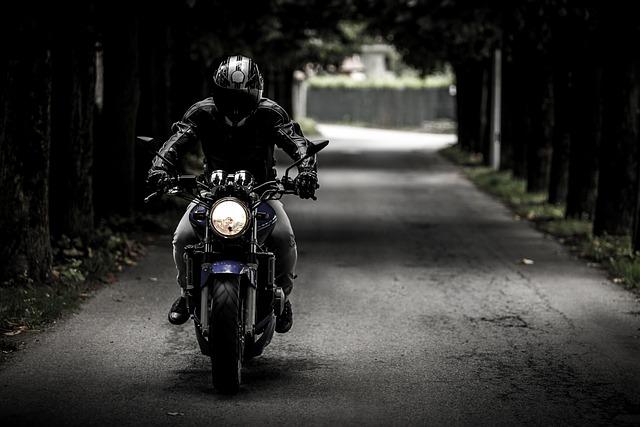Hey there fellow motorcycle enthusiasts! Are you looking to keep your ride looking sleek and shiny for years to come? Well, look no further because in this article, we’ll be diving into the world of ceramic coating techniques for motorcycles. Whether you’re a seasoned rider or new to the game, we’ve got all the tips and tricks you need to keep your bike looking its best. So sit back, relax, and let’s get into it!
Choosing the Right Type of Ceramic Coating for Your Motorcycle
When it comes to protecting your motorcycle with ceramic coating, there are a few key factors to consider in order to choose the right type for your needs. One important aspect to take into account is the durability of the coating. Some ceramic coatings are designed to last longer than others, so it’s crucial to select a product that offers the level of protection you desire.
Another factor to consider is the application process. Different ceramic coatings may require varying techniques for application, such as spray-on, wipe-on, or professional application. It’s essential to choose a method that fits your level of expertise and comfort with DIY projects.
Additionally, consider the level of gloss and finish you want for your motorcycle. Some ceramic coatings provide a high gloss shine, while others offer a more matte finish. Think about the aesthetic you’re aiming for and select a coating that aligns with your preferences.

Understanding the Benefits of Ceramic Coating for Motorcycle Surfaces
When it comes to protecting the surfaces of your motorcycle, ceramic coating is a game-changer. This advanced technology provides a durable and long-lasting barrier against environmental factors, UV rays, and scratches. By applying a thin layer of ceramic coating to your motorcycle, you can enjoy a range of benefits that will keep your bike looking pristine for years to come.
Some of the key advantages of using ceramic coating on your motorcycle surfaces include:
- Enhanced durability: Ceramic coating is highly resistant to chipping, fading, and peeling, ensuring that your motorcycle maintains its sleek appearance for an extended period of time.
- Easy maintenance: With ceramic coating, cleaning your motorcycle becomes a breeze. The hydrophobic properties of the coating repel dirt and grime, making it easier to wash off any debris.
- UV protection: Ceramic coating provides a protective barrier against harmful UV rays, preventing your motorcycle’s paint from fading or oxidizing over time.

Steps to Properly Prepare Your Motorcycle for Ceramic Coating
Before applying ceramic coating to your motorcycle, it’s important to properly prepare the surface to ensure the best results. Follow these steps to get your bike ready for a long-lasting ceramic coating:
- Clean the Surface: Start by washing your motorcycle thoroughly to remove any dirt, grease, and grime. Use a high-quality automotive shampoo and microfiber cloth to ensure the surface is clean.
- Decontaminate: After washing, use a clay bar to remove any embedded contaminants like tar, tree sap, or industrial fallout. This step is crucial to ensure the ceramic coating can bond properly to the surface.
- Polish: Once the surface is clean and free of contaminants, polish your motorcycle to remove any swirl marks, scratches, or oxidation. This will help the ceramic coating adhere better and provide a smoother finish.

Tips for Applying Ceramic Coating to Your Motorcycle at Home
When it comes to protecting your motorcycle’s paint job and keeping it looking shiny and new, ceramic coating is the way to go. Here are some expert :
- Prepare the Surface: Before applying ceramic coating, make sure to thoroughly wash and dry your motorcycle to remove any dirt, grease, or contaminants.
- Use the Right Tools: Invest in high-quality applicators and microfiber cloths to ensure an even application and smooth finish.
- Work in Small Sections: Apply the ceramic coating in small, manageable sections to ensure complete coverage and avoid streaks or missed spots.
| Tip: | Apply ceramic coating in a well-ventilated area to prevent inhaling fumes and ensure proper curing. |

Key Factors to Consider When Hiring a Professional to Ceramic Coat Your Motorcycle
Ceramic Coating Techniques for Motorcycles
When looking to hire a professional to ceramic coat your motorcycle, there are several key factors to consider to ensure you get the best results. Here are some important points to keep in mind:
- Experience: Look for a professional who has experience specifically in ceramic coating motorcycles. This experience will ensure they are familiar with the unique challenges and requirements of coating different motorcycle surfaces.
- Quality of Products: Make sure the professional uses high-quality ceramic coating products that are designed for motorcycle surfaces. This will ensure durability and long-lasting protection for your bike.
- Customer Reviews: Check customer reviews and testimonials to gauge the reputation of the professional. Positive reviews from satisfied customers can give you confidence in their services.

How to Maintain the Longevity of Ceramic Coating on Your Motorcycle
Ensuring that your motorcycle’s ceramic coating stays in top condition is essential for keeping your bike looking sleek and protected from the elements. Here are some techniques to maintain the longevity of your ceramic coating:
- Regular Washing: Keep your motorcycle clean by washing it regularly. This will prevent dirt and grime from building up and damaging the ceramic coating.
- Avoid Harsh Chemicals: When cleaning your motorcycle, be sure to use gentle cleaners that won’t strip away the ceramic coating. Harsh chemicals can degrade the coating over time.
- Apply Ceramic Coating Sealant: Every few months, apply a ceramic coating sealant to enhance the longevity of your existing ceramic coating. This will provide an extra layer of protection against UV rays and environmental contaminants.
| Product | Price |
|---|---|
| Ceramic Coating Sealant | $30 |
| Gentle Cleaner | $15 |

Common Mistakes to Avoid When Applying Ceramic Coating to Your Motorcycle
When applying ceramic coating to your motorcycle, it is important to avoid some common mistakes that can affect the result of the coating. One of the most common mistakes is not properly cleaning the surface of the motorcycle before applying the ceramic coating. Make sure to thoroughly wash and decontaminate the surface to ensure that the coating adheres properly.
Another mistake to avoid is applying too much ceramic coating at once. It is important to apply the coating in thin, even layers to prevent streaks and ensure a smooth finish. Additionally, make sure to follow the manufacturer’s instructions regarding the curing time of the coating to achieve the best results.
Lastly, a common mistake to avoid is not maintaining the ceramic coating properly after application. Be sure to regularly wash and maintain your motorcycle to preserve the coating’s durability and longevity. By following these tips and avoiding these common mistakes, you can ensure that your motorcycle stays protected and looking its best for years to come.
Exploring Advanced Techniques for Achieving a Flawless Ceramic Coating Finish
When it comes to achieving a flawless ceramic coating finish on motorcycles, it is essential to explore advanced techniques that will result in a showroom-quality shine. One key technique is proper preparation, which includes thoroughly cleaning and decontaminating the surface of the motorcycle before applying the ceramic coating. This ensures that the coating adheres properly and lasts longer.
Another advanced technique to consider is the use of layering. By applying multiple layers of ceramic coating, you can increase the thickness and durability of the coating, providing added protection against scratches, swirl marks, and UV damage. Additionally, using a high-quality ceramic coating product with a high percentage of SiO2 will enhance the gloss and hydrophobic properties of the finish.
Furthermore, utilizing advanced application methods such as crosshatch or criss-cross patterns when applying the ceramic coating can help ensure even coverage and eliminate streaking or uneven spots. By following these advanced techniques, motorcycle owners can achieve a flawless ceramic coating finish that will not only enhance the appearance of their bike but also provide long-lasting protection.

Enhancing the Aesthetics of Your Motorcycle with Ceramic Coating
When it comes to enhancing the aesthetics of your motorcycle, ceramic coating is a game-changer. This advanced technique not only protects your bike from the elements but also gives it a sleek and glossy finish that is sure to turn heads on the road. But how exactly does ceramic coating work, and what techniques can you use to achieve the best results?
One of the key advantages of ceramic coating is its durability. Once applied, it forms a strong bond with the surface of your motorcycle, creating a protective layer that is resistant to UV rays, chemicals, and even minor scratches. This means that your bike will maintain its shine and color for much longer than traditional wax or polish.
When applying ceramic coating to your motorcycle, it’s important to follow a few key techniques to ensure the best results. First, make sure to thoroughly clean and prep the surface of your bike before applying the coating. This will ensure that the ceramic coating bonds effectively and evenly across the entire surface. Additionally, be sure to work in small sections and apply the coating in a consistent, even manner to avoid streaks or uneven coverage.

The Science Behind Ceramic Coating and its Impact on Motorcycle Performance
When it comes to maximizing motorcycle performance, ceramic coating is a game-changer. This innovative technique involves applying a layer of ceramic material to the surfaces of the motorcycle parts, creating a protective barrier that offers numerous benefits. Here’s a breakdown of the science behind ceramic coating and how it can impact your motorcycle’s performance:
Benefits of Ceramic Coating for Motorcycles:
- Heat Resistance: Ceramic coating can withstand high temperatures, making it ideal for motorcycle exhaust systems and engine components.
- Corrosion Protection: The ceramic layer acts as a shield against rust and corrosion, extending the lifespan of your motorcycle parts.
- Improved Aesthetics: Ceramic coating can enhance the appearance of your motorcycle, providing a glossy finish that lasts longer than traditional paint.
- Reduced Friction: By reducing friction between moving parts, ceramic coating can improve the overall performance and efficiency of your motorcycle.
Overall, ceramic coating techniques for motorcycles offer a cost-effective and long-lasting solution to improve performance, protect against wear and tear, and enhance the aesthetics of your bike. Whether you’re a seasoned rider or a beginner enthusiast, investing in ceramic coating can take your motorcycle to the next level.
So, there you have it – a comprehensive guide to ceramic coating techniques for motorcycles. By following these tips and tricks, you can ensure that your prized two-wheeler stays looking sleek and shiny for years to come. Don’t underestimate the power of ceramic coating in protecting your ride from the elements and maintaining its value. Stay tuned for more motorcycle maintenance tips and tricks on our blog. Ride safe and keep shining!



